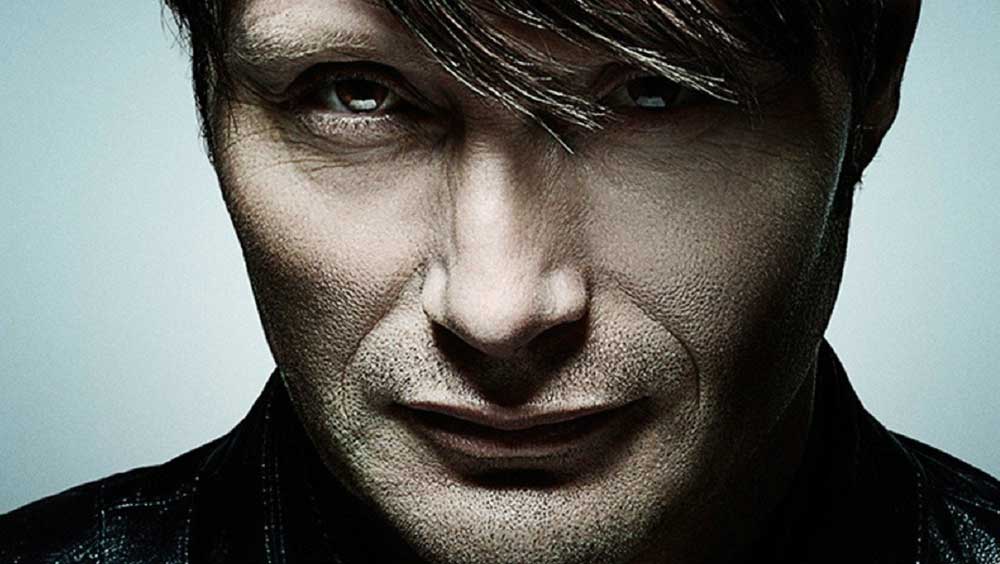I told you I’d be harping on Hannibal for a good while to come, so don’t say you weren’t fairly warned. Like many Fannibals, I’m feeling the loss of the weirdest, most wonderfully twisted, breathtakingly beautiful, and deliciously intellectual show ever to grace the small screen. I have faith that it could find a second home somewhere, someday, but the wait is likely to be long and painful. So what I’ve been doing in the meantime is catching up on all the behind-the-scenes type stuff – from DVD commentaries to making-of-featurettes to panel discussions all the way to relevant twitter feeds – to satiate my curiosity as to how such a unique show ever came into being. And as it turns out, the collaborative process for Hannibal is just as unusual as the show itself, even establishing new standards for television productions ahead. Amidst all these wonderful facts and anecdotes are scattered intriguing references to relevant readings to enhance the dedicated viewer’s understanding of the show and the minds that created it. My research process has been (not unpleasantly) time consuming, so for your convenience I present to you fanatic Fannibals out there a Hannibal reading list.
Thomas Harris
This is kind of a no brainer, but the most pertinent and enlightening reading for Hannibal is the source material itself. I read the Thomas Harris novels long ago – and to be quite honest, when I was far to young to fully appreciate them – and immediately became obsessed with the characters, the world they inhabited, their stories and relationships, and the beautifully poetic language with which the books were written. The books include Red Dragon, The Silence of the Lambs, Hannibal, and – reluctantly – Hannibal Rising. The prominent character to come out of these, of course, is the cannibalistic serial killer and psychiatrist Dr. Hannibal Lecter, expertly portrayed first by Brian Cox and subsequently Anthony Hopkins in the various film adaptations. The attraction to what would normally be such a despicable character is often intuitively understood but difficult to articulate. The man himself is perhaps the smartest, classiest, and most remarkable person in fiction and his dark proclivities speak to the desire in us all for ultimate freedom from the politeness of social constructs.
Brain on Fire: My Month of Madness by Susannah Cahalan
Those of you familiar with season one will remember that Will Graham’s vulnerability to Hannibal’s manipulation was largely made possible by the fact that he was suffering from a rare form of encephalitis. Brain on Fire – the memoir of a woman who seemingly went suddenly and drastically insane without reason – is a book specifically cited by Bryan Fuller as an inspiration for using the condition as part of the story. While Cahalan suffered from this difficult to diagnose disease she would experience periods of lost time and hallucinations and displayed unusual, violent behavior. Hannibal allows Will Graham to believe he is going insane as he experiences similar symptoms, even exacerbating his condition and leading him to believe he had committed murders during his black outs. Brain on Fire is a fascinating examination of the powerful effects of disease on the mind and how easily a neurological condition can be mistaken for mental illness.
Hunting Humans: The Rise of the Modern Multiple Murderer by Elliott Leyton
Anthropologist Elliott Leyton conducted this detailed case study of a number of notorious serial murderers through examination of related diaries, media, interviews, and video, compiling and analyzing data from those materials to create a profound and groundbreaking profile of the modern mass murderer. This book is cited in The Art and Making of Hannibal the Television Series by Jesse McLean (which should also go on your reading list) as essential reading for director David Slade and which helped inform the style and depiction of violence on the show. Slade describes Hunting Humans as a deeply moral book which never romanticizes or shies away from the terrible violence committed by these murderers. Slade knew that Hannibal could not shy away from depicting the violence of the story or else risk undermining the consequences of that violence, that not to show the blood and viscera means not to feel the true cost of violence.
Masochism: Coldness and Cruelty & Venus in Furs by Gilles Deleuze
Another piece of writing referenced in The Making of Hannibal, production designer Patti Podesta cites this classic essay as an inspiration for her approach to design for Hannibal. In it, Deleuze talks about the sadist and their need to destroy an object that is a sign for the world in order to reconstruct their own world. In Podesta’s mind, “everything around [Hannibal] would be produced with his idea of the obliteration of actual nature to have a sort of perfection.” Thus Hannibal goes about destroying Will Graham in order for a new, more perfect Will Graham to emerge. This idea is realized beautifully in Podesta’s production design, from Hannibal’s sundry bespoke suits to his austere and unnatural dining room.
The Final Problem by Sir Arthur Conan Doyle
All of the original Sherlock Holmes stories by Sir Arthur Conan Doyle are highly recommended reading, but this one specifically for its relevance to the relationship between Will Graham and Hannibal and their tumble over the bluff at the end of season three. Meant to be his final case, Holmes tirelessly pursues a criminal whose mental acuteness matches his own and is forced to sacrifice himself in a fight over the falls at Reichenbach in order to rid the world of his evil. Professor James Moriarty, Napoleon of Crime, is obviously Hannibal Lecter in this scenario, and Holmes our Will Graham. Even in Doyle’s story, the two are not natural enemies but rather two men who greatly admire each other’s intelligence and connect in a supremely profound way which is usually hindered by their great intellect. Tragically, one of them is dedicated to justice and the other to criminal pursuits.
Bryan Fuller Interviews
Any interview that Hannibal showrunner Bryan Fuller gives is full of insight and interest, so whatever you read and wherever you read it, you’re going to get some great information. Two of my favorites – the Grantland interview and the Hitfix interview – were published at the end of season three, so the discussion here takes into account the entire series and future possibilities. Fuller is an extremely smart, insightful, funny, and creative man and its fairly rare for the showrunner of a series to be as sought out by fans as the forward facing cast. If you watch panel discussions, however, there are just as many Fannibals asking Fuller questions as there are questions for the actors. And it’s no wonder. Not only is Fuller extremely engaging, generous with his time, and appreciative of fans, but the main attraction to the show isn’t necessarily the actors – as is more common with more mainstream television – but the show’s vision as conveyed through Fuller’s writing. There’s no better place to turn for answers about that than from the lead writer himself.
Make sure to follow Renegade Cinema on Twitter, where we share all the new trailers, videos, and promo images from all the movies we love.





